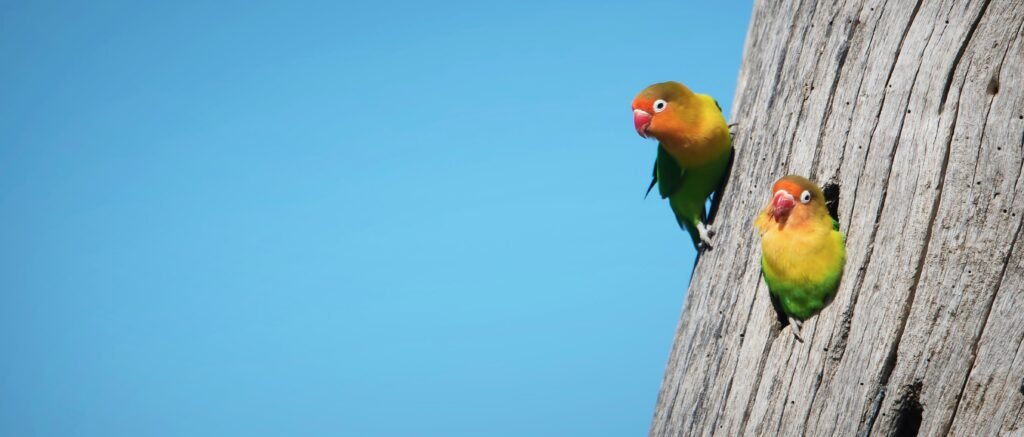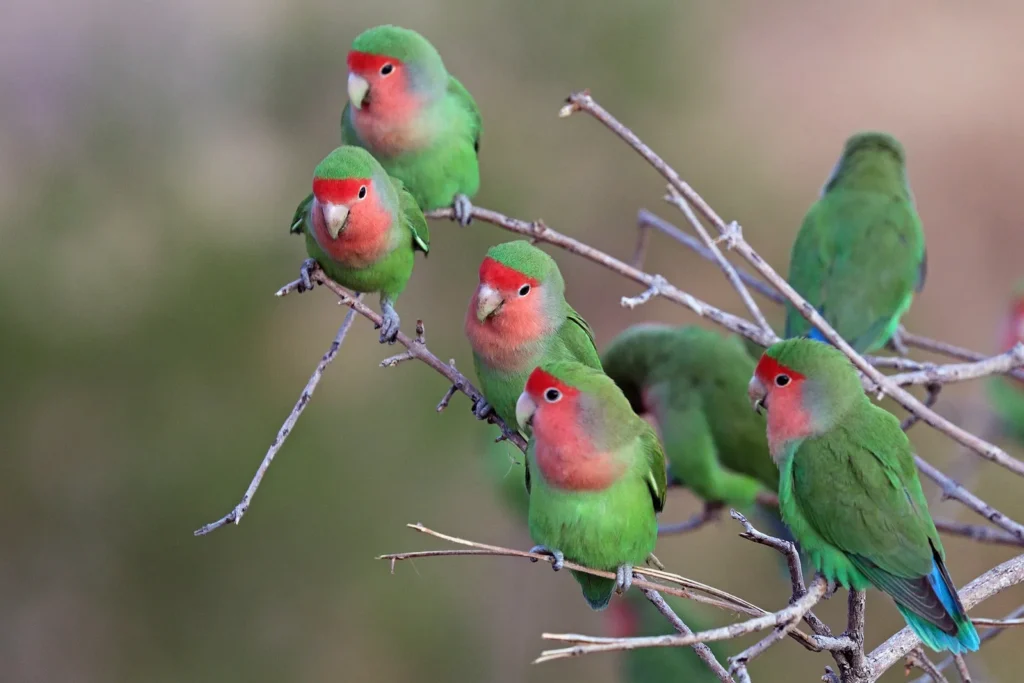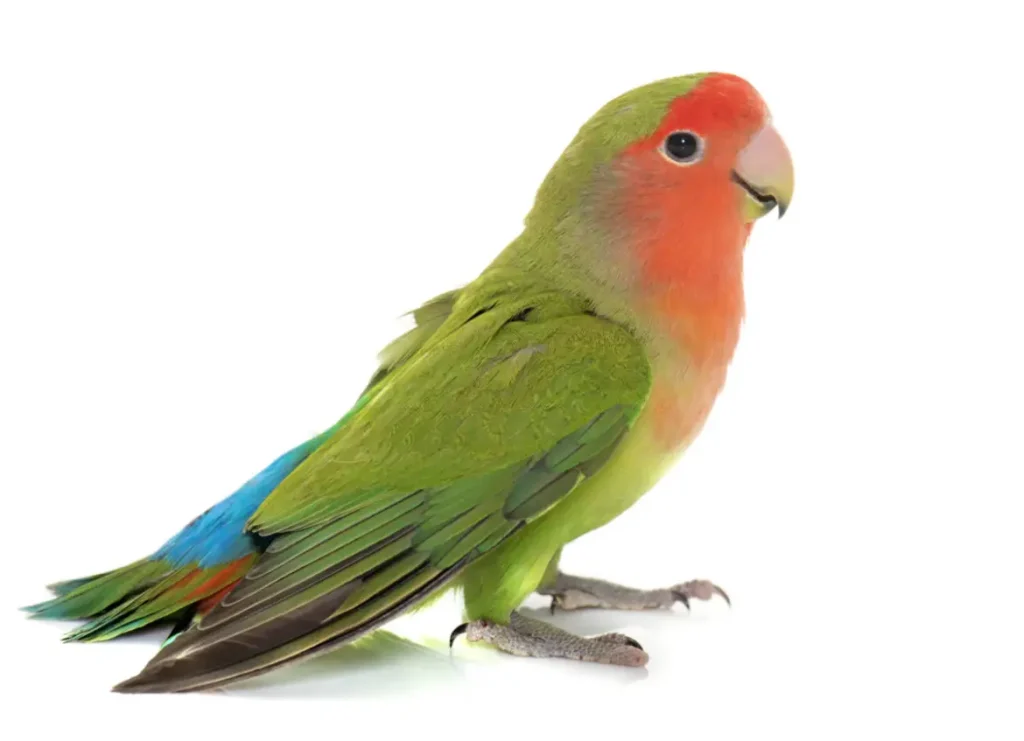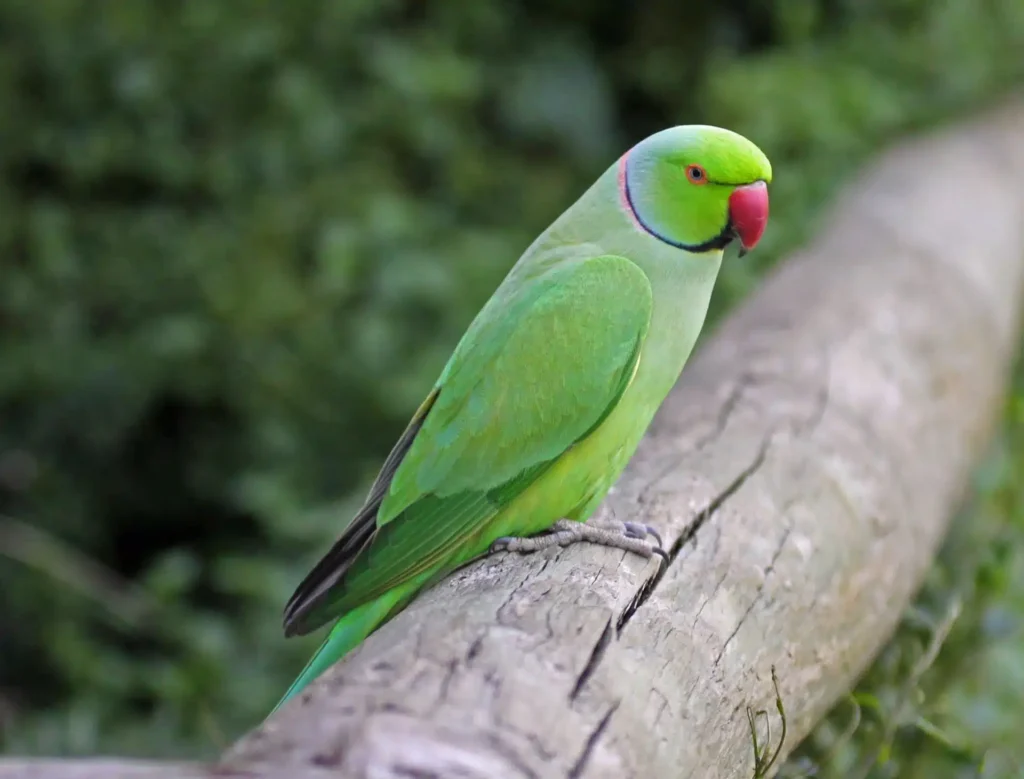Love Takes Flight: The Ultimate Guide to Lovebird Care and Companionship
-Bird categories in one line:
Categories: Companion Birds, Parrots, Small Parrots, Affectionate Birds, African Birds, Colorful Birds, Cage Birds, Beginner-Friendly Birds, Social Birds, Seed-Eating Birds

Introduction: The Charming World of Lovebirds
Lovebirds, with their vivid plumage and affectionate nature, have captured the hearts of bird enthusiasts worldwide. These small parrots, belonging to the genus Agapornis, are native to the African continent and have become popular pets due to their compact size, playful personalities, and capacity for forming strong bonds with their human caregivers. Whether you’re considering your first feathered companion or are an experienced bird keeper, lovebirds offer a delightful blend of charm, intelligence, and affection that makes them stand out in the avian world.
History and Origin: From African Skies to Our Homes
The journey of lovebirds from their native African habitats to our living rooms is a fascinating tale of discovery and adaptation. There are nine species of lovebirds, all originating from various regions of Africa, ranging from forested areas to savannas. The most common species kept as pets are the Peach-faced Lovebird (Agapornis roseicollis), Fischer’s Lovebird (Agapornis fischeri), and the Masked Lovebird (Agapornis personatus).
Lovebirds were first introduced to Europe in the late 19th century by explorers and traders returning from Africa. Their name stems from the strong pair bonds they form and their affectionate behavior towards their mates. The first recorded successful breeding of lovebirds in captivity took place in the early 20th century, paving the way for their popularity as pets.
A significant milestone in lovebird history occurred in 1934 when the first blue mutation of the Peach-faced Lovebird was discovered in South Africa. This event sparked a revolution in lovebird breeding, leading to the development of numerous color mutations that we see today.
In recent years, lovebirds have gained additional popularity through media representation. The 2011 animated film “Rio,” while featuring a Spix’s Macaw, increased public interest in colorful, small parrots as pets. This surge in popularity also raised awareness about responsible pet ownership and the importance of conservation efforts for wild parrot populations.

Lovebird Care: A Comprehensive Guide
- Housing:
- Cage size: Minimum 18″ x 18″ x 18″ for a pair, larger is better
- Bar spacing: 1/2 inch or less to prevent escapes
- Provide various perches of different diameters and textures
- Include plenty of toys for mental stimulation (swings, bells, mirrors)
- Environment:
- Temperature: 65°F to 80°F (18°C to 27°C)
- Avoid drafts and sudden temperature changes
- Provide 10-12 hours of darkness for proper sleep
- Social Needs:
- Lovebirds thrive on companionship, either with another lovebird or human interaction
- Single birds require significant daily attention (at least 2-3 hours)
- Exercise:
- Allow at least 2-3 hours of supervised out-of-cage time daily
- Ensure a safe, bird-proofed area for flight and exploration
- Grooming:
- Offer bathing opportunities 2-3 times a week
- Trim nails and wings as needed (consult a vet if unsure)
- Training:
- Start with simple step-up commands
- Use positive reinforcement with treats and praise
- Be patient and consistent in your training efforts

Lovebird Cuisine: A Balanced Diet for Optimal Health
- Pellets: 60-70% of diet
- High-quality pellets formulated for small parrots
- Fresh Fruits and Vegetables: 20-30% of diet
- Offer a variety daily (e.g., leafy greens, carrots, apples, berries)
- Avoid avocado, chocolate, and caffeine
- Seeds: 10% of diet
- Small amount of high-quality seed mix as treats
- Treats:
- Millet sprays, given sparingly
- Nutriberries as occasional treats
- Fresh Water:
- Change daily and clean containers regularly

Health Matters: Common Lovebird Ailments and Prevention
- Respiratory Infections:
- Symptoms: Wheezing, tail bobbing, nasal discharge
- Prevention: Avoid drafts, maintain clean environment
- Psittacosis:
- Symptoms: Lethargy, ruffled feathers, eye/nasal discharge
- Prevention: Quarantine new birds, maintain hygiene
- Feather Plucking:
- Symptoms: Bare patches, damaged feathers
- Prevention: Reduce stress, provide mental stimulation
- Egg Binding:
- Symptoms: Straining, lethargy (in females)
- Prevention: Proper diet, adequate calcium
- Beak and Feather Disease:
- Symptoms: Abnormal feather growth, beak deformities
- Prevention: No cure, but good hygiene practices can prevent spread
Regular check-ups with an avian veterinarian are crucial for maintaining your lovebird’s health.
Business: Breeding and Beyond
Breeding lovebirds can be a rewarding hobby or business venture. Key considerations include:
- Genetics: Understand color mutations and inheritance patterns
- Setup: Proper breeding cages, nest boxes, and environment control
- Diet: Enhanced nutrition for breeding pairs
- Health: Regular vet check-ups and potential hand-feeding of chicks
- Legalities: Check local regulations on bird breeding and sales
Lovebird Prices by Variety and Quality:
| Variety/Quality | Price Range (USD) |
|---|---|
| Standard Colors | $40 – $130 |
| Rare Mutations | $100 – $300 |
| Show Quality | $150 – $400+ |
| Hand-Raised | $80 – $200 |
Prices in Different Regions:
| Country/Region | Price Range (Local Currency) | Approximate USD |
|---|---|---|
| USA | $40 – $300 | $40 – $300 |
| UK | £30 – £200 | $40 – $275 |
| Australia | $50 – $300 AUD | $35 – $220 |
| Canada | $50 – $300 CAD | $40 – $240 |
| Germany | €40 – €250 | $45 – $280 |
| Japan | ¥5,000 – ¥30,000 | $45 – $270 |

Lovebird Lore: FAQs
- How long do lovebirds live?
With proper care, lovebirds can live 10-15 years, some even reaching 20+. - Do lovebirds really mate for life?
In the wild, they often form strong pair bonds, but in captivity, they can bond with humans or other birds. - Can lovebirds talk?
While not known for talking, some lovebirds can learn to mimic simple words or sounds. - How can I tell if my lovebird is male or female?
It’s challenging to visually sex most lovebirds; DNA testing is the most accurate method. - Do lovebirds need companions?
They thrive with companionship, either another lovebird or significant human interaction. - How often should I clean my lovebird’s cage?
Spot clean daily, with a thorough cleaning weekly. - Can lovebirds eat human food?
Some fruits and vegetables are safe, but avoid avocado, chocolate, and caffeine. - How often do lovebirds need to bathe?
Offer bathing opportunities 2-3 times a week. - Do lovebirds need their wings clipped?
It’s a personal choice; discuss pros and cons with an avian vet. - How can I tell if my lovebird is sick?
Watch for changes in appetite, droppings, behavior, or appearance.
Quick Facts: Lovebird Edition
| Aspect | Information |
|---|---|
| Scientific Name | Agapornis (9 species) |
| Origin | Africa |
| Size | 5-7 inches (13-17 cm) |
| Weight | 1-2 oz (30-60 g) |
| Lifespan | 10-15 years (up to 20+ with excellent care) |
| Diet | Pellets, seeds, fruits, vegetables |
| Social Needs | High; benefit from companionship |
| Talking Ability | Limited; can mimic some sounds |
| Intelligence | High; can learn tricks |
| Exercise Needs | 2-3 hours out-of-cage time daily |
| Noise Level | Moderate; can be quite vocal |
| Compatibility | Good with families, including gentle children |
| Common Species as Pets | Peach-faced, Fischer’s, Masked Lovebirds |
| Breeding Age | 10-12 months |
| Clutch Size | 3-6 eggs |
| Incubation Period | 21-23 days |
| Fledging Age | 5-6 weeks |
Keywords: lovebird care, pet lovebirds, lovebird breeding, lovebird diet, lovebird health, lovebird training, lovebird cage setup, lovebird prices, lovebird species, African parrots, pet birds, avian companionship, small parrots, colorful birds

Views: 0









